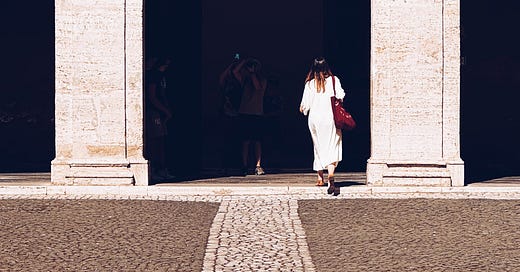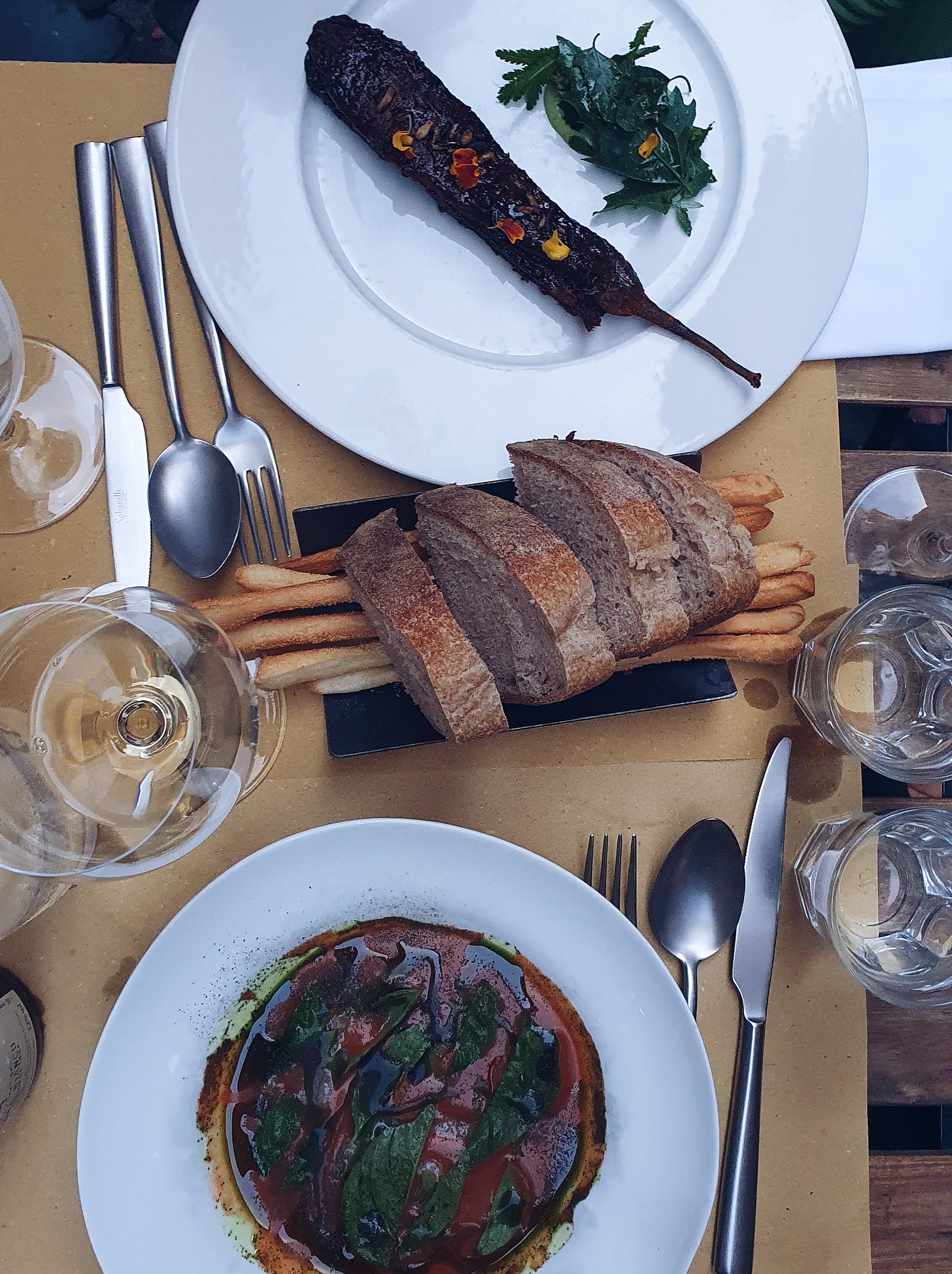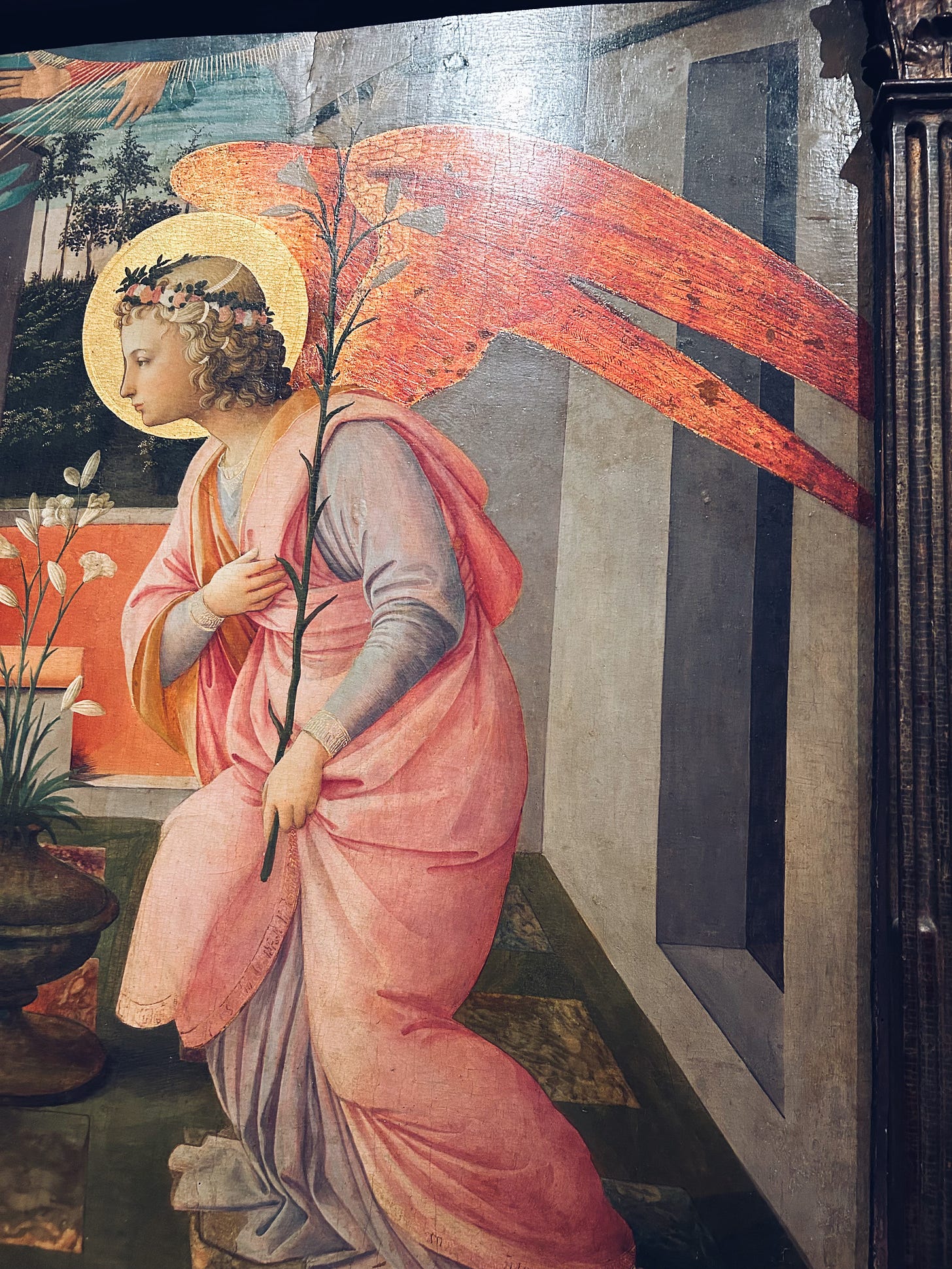“Writing about Rome is like not writing anything”, wrote Yurii Andrukhovych in his Lexicon of intimate cities. “Whatever you tackle, there’s infinity all around. Whatever you write about, you cannot cover everything.” This is my improvised translation of a translation, but it covers the complexities of writing about Rome well.
Too much of everything, a layered, bottomless treasure chest of the emblematic burnt-orange houses and cloudy umbrella pines, of quiet, tenacious Antique ruins, and Caravaggio’s dramatic scenes, of papal scarlet and white of the maritozzi (Roman sweet buns generously filled with whipped cream), of Borromini’s, for that time- and always, brilliant architectural fancy, and Bernini’s colonnades on St Peter’s Square (seing them for the first time at 21 was one of the most memorable moments of my life), of solemn basilicas of Late Antiquity and Fascist working-class neighborhoods Carlo Levi referred to as “the nameless beehives” in his Fleeting Rome (today, the neighborhood of Garbatella actually looks like a nice place to live, with a village atmosphere almost in the center of the city), of the contender for the best Carbonara there is in a restaurant I’d like to keep a secret, and the rustic pastries in a Jewish bakery I’d like to share as a treat. The list could go on.
Writing a guide on Rome is a project bound to remain incomplete, so I decided to share some of my favourite places and moments from last summer in the city. I’ll write an incomplete guide to Rome eventually.
1. Aperitivo and a light dinner on a hot July evening in Retrobottega, where you can have small plates of locally sourced or foraged goods in a cool, casual atmosphere. Sitting on a cobbled street, looking up to the windows of the surrounding apartments, imagining the rooms and the kitchens (and what would it be like to cook in them), eating a star gazpacho and a delicious burnt aubergine, talking, wine in hand, soaking in the colors of the facades: Roman, peach, burnt orange, teracotta.
2. Morning spent in Francesco Borromini‘s curvaceous space of the church of San Ivo in the Sapienza palace, open for two hours weekly (on Sundays). Borromini’s tenure at Sapienza stretched over 35 years and three pontificates, during which he managed to create an extraordinary, dynamic space, far removed from the calm tradition of the Renaissance, and a culmination of the Roman Baroque. A central layout is crowned with a cupola that is not round but broken in a hexagon, formed by layering a trefoil and a triangle with cut-off apices, resulting in an undulating effect and a space as if hollowed out by the hand of a sculptor. I loved observing the solitude of the confessionals by the walls; the light on the hypnotic pattern of black and white marble tiles on the floor; the tall, swirly spire of the lantern, unmissable in the panorama of this part of the city.
3. Smelling each perfume, lotion, soap, and rose water in the Officina Profumo di Santa Maria Novella shop right across the street. Santa Maria Novella originates in Florence, and their majestic flagship store, an old pharmacy, is there. But so is everyone. The Roman Officina Profumo is a quiet, wood-cabinet-lined store wrapped in a flowery, powdery scent. The old-style perfume I wear throughout the year reminds me of Rome, of the heat of the streets and the cool marble of San Ivo Alla Sapienza.
4. A lunch at Piatto Romano, a classic Roman trattoria in an off-the-beaten-tourist-path Testaccio neighbourhood. The dining room is simple, stripped of almost all decorative elements- the focus here is on eating, and the only prominent element is tables covered with yellow paper tablecloths. The food is traditional Roman, the pasta: ammatriciana, carbonara, cacio e pepe; the meats: tripe alla romana, coda alla vaccinara; but the taste that I remember most clearly was misticanza salad, a mixture of wild, bitter salad greens with anchovy dressing.
5. Seeing Caravaggio’s Conversion of St. Paul and Crucifixion of St. Peter in the quiet Cerasi chapel of Santa Maria del Popolo, and the dramatic shafts of light he used to represent the divine power and the intensity of the moment in both scenes. A lot more peaceful experience than the St Mathew’s trilogy in San Luigi dei Francesi (also unbelievably beautiful but unfortunately besieged by tour groups).
6. Entering the solemn 5th century Basilica of Santa Sabina on a scorching July day and observing the light piercing through its lace-like, perforated selenite windows (much like they looked like more than 15 centuries ago) and leaking over the cool marble floors. Also, the view of the city over the foliage from the Aventine hill, and walking through the garden with orange trees and cloudy pines.
7. Eating a pizza ebraica- a rustic, hard pastry with dried fruit and nuts and a blackened crostata with ricotta and cherries from Pasticceria Boccione, a 200-year-old bakery in the Jewish ghetto. Watching the ladies working in the store, undisturbed and dominating in their world of lush, imperfect, burned pastries (and I cannot imagine better sweets), of flour-dusted floors and walls lined with boxes of white eggs.
8. Giving up on waiting in lines at Galleria Borghese and going to a quiet, lavish, and almost empty Galleria Doria Pamphilj instead. The large private collection is housed in Palazzo Doria Pamphilj, dating back to the 16th century but owing its extravagant looks to 18th-century additions and renovations. The highlight of the collection for me was Fra Filippo Lippi’s touching Annunciation. The serenity and the clarity of the scene, the perfection of the golden aureolas, and especially the colors: bright reds of Mary’s dress and the archangel’s wings, the golden brocade in the background, the blue of Mary’s cape.
9. Humble but rich toasted bread with lard at modern trattoria Mazzo in a working-class, street-art and food-dotted neighborhood of San Lorenzo, close to Termini station. Everything else (the trippe, the steak tartare, the pasta) was very good too, but that slice of juicy bread with dried chillies on the first evening in Rome was something else.
10. Shopping for socks at Gammarelli- a tailoring shop that dresses popes and cardinals in rich colors, architectural mitre and birette (caps worn by Christian clergy), and perfectly-tailored ecclesiastical robes. I bought a pair of their iconic fine-threaded red socks for special occasions, but mostly enjoyed looking at the brocade fantasies in poison green, cherry-plum-purples, and crimson reds.
Now, let me hear your favourite moments/places! I would genuinely like to know.
















I wish I had read this before we went end of May! But we only stayed 2 days, so I’m saving some ideas for next time (who knows). I was surprised how crowded the center was, so in the end we opted for less busy quarters, like Testaccio. Giardino delle Arance was a moment of calm, and an unexpected but hoped for culinary delight at the nearby CasaMora (Roman Fusion) https://maps.app.goo.gl/ByzM6nfkbB7ufGd87?g_st=com.google.maps.preview.copy